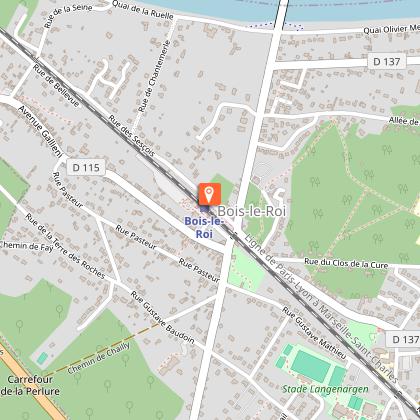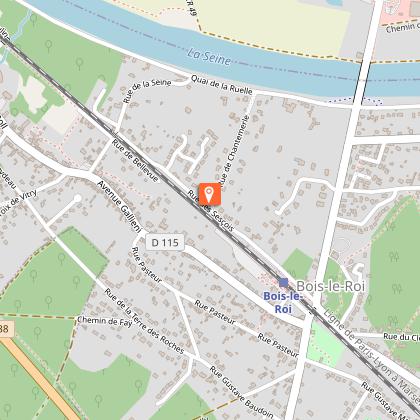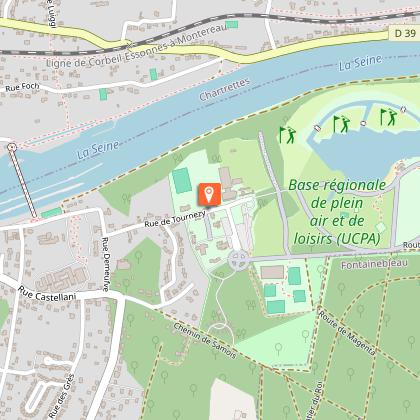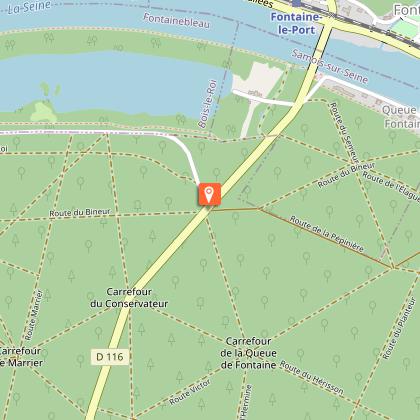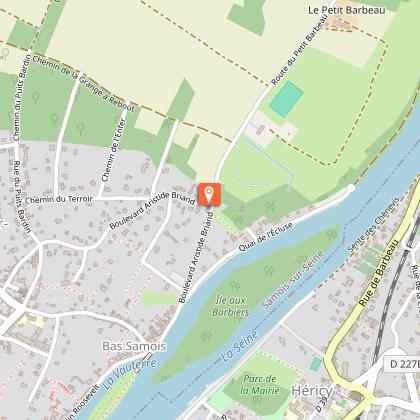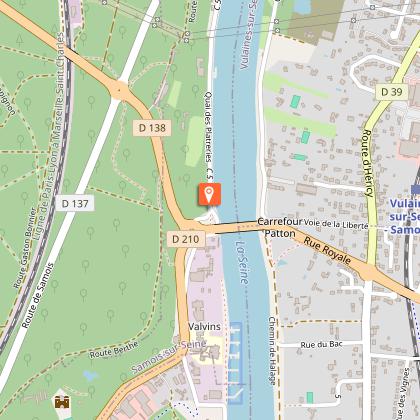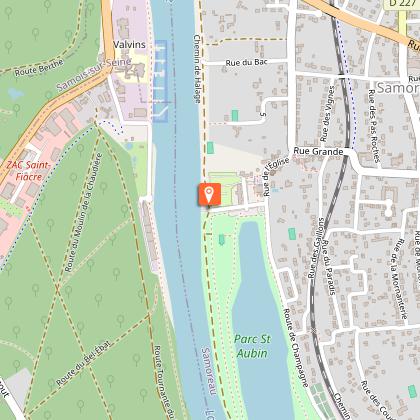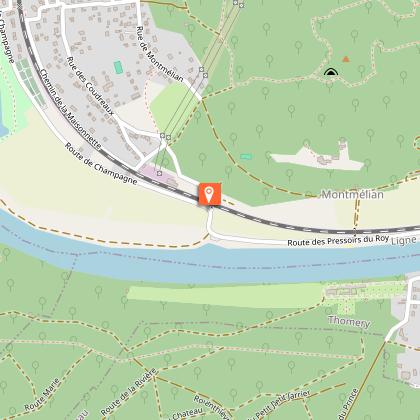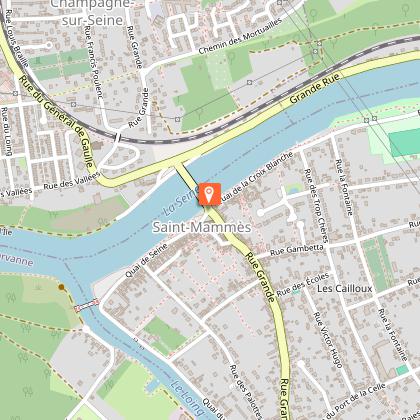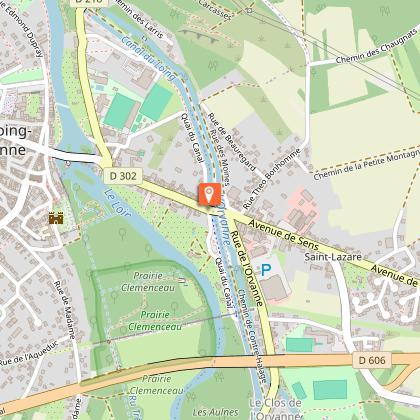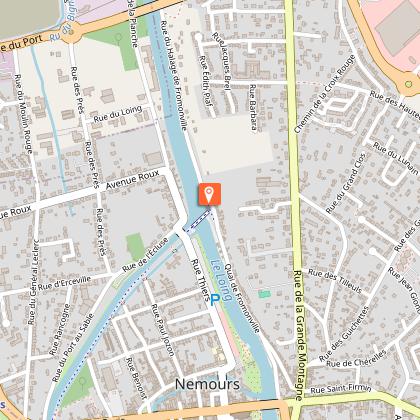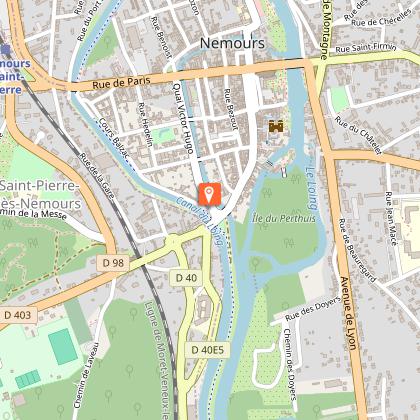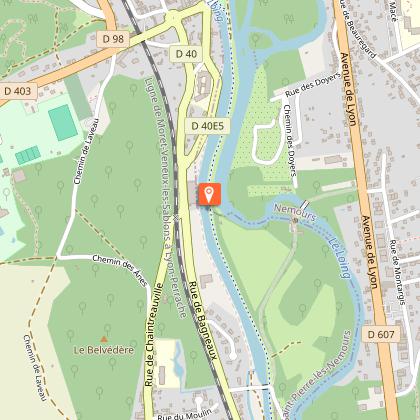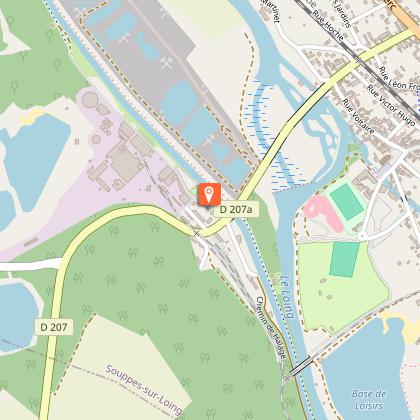Allarme
Allarmi
Tipo di pratica
In bici da corsa
Presentazione
Mappa
Tappe
Punti di interesse
Sintesi di Cirkwi
Valutazioni e recensioni
Vedi nei dintorni
La Scandibérique sud Seine-et-Marne – de Bois-le-Roi à Souppes-sur-Loing

Credito : Amelie Laurin
Il breve di Cirkwi
Scopri Scandibérique: in bicicletta da Bois-le-Roi a Souppes-sur-Loing
Intraprendi un viaggio attraverso i suggestivi paesaggi della parte meridionale de la Senna e Marna con il percorso Scandibérique, un tesoro proposto da Seine et Marne Attractivité. Questa avventura ciclistica di 60 km lungo i fiumi Senna e Loing offre molto più di un semplice esercizio fisico; è un percorso verso l'anima della Francia. Dalle foreste fitte e classificate ai luoghi naturali preservati, ogni pedalata ti avvicina al cuore della storia e della cultura francese. Attraverso villaggi pieni di carattere e paesaggi punteggiati da importanti monumenti storici, l'esperienza va oltre la semplice visita turistica. Senti la brezza, immergiti nelle atmosfere vibranti e diventa parte del tessuto vivente di questa regione.
Breve panoramica tecnica
Questo percorso lungo 54,9 km presenta un'altitudine massima di 78 metri e una minima di 41 metri. I ciclisti dovrebbero prepararsi ad affrontare un dislivello positivo totale tra i 217 e i 225 metri. Nonostante le pendenze relativamente modeste, il terreno ondulato può essere una sfida moderata, rendendolo perfetto per ciclisti intermedi. Il viaggio da Bois-le-Roi a Souppes-sur-Loing è caratterizzato da una serie di caratteristiche tecniche che migliorano l'esperienza ciclistica, richiedendo sia resistenza che strategia. Fondamentalmente, offre un mix bilanciato di sforzo fisico e godimento paesaggistico.
Suggerimenti stagionali e sicurezza
Intraprendere questa avventura ciclistica richiede una preparazione attenta. La primavera offre paesaggi fioriti, ma i sentieri potrebbero essere bagnati; assicurati che la tua bicicletta sia equipaggiata per il fango. L'estate promette viste verdi, ma l'idratazione è fondamentale sotto il sole. L'autunno porta un caleidoscopio di colori, anche se le foglie cadute possono essere scivolose. L'inverno, sebbene cupo, ha una sua bellezza austera, ma le condizioni ghiacciate richiedono cautela. Indossa sempre un casco, tieni a portata di mano un kit di riparazione e informa qualcuno del tuo itinerario. Abbracciare questi consigli migliora la sicurezza e il divertimento, indipendentemente dalla stagione.
Tesori storici di Seine-et-Marne
La regione di Seine-et-Marne è intrisa di una ricca tapezzeria di storia e cultura, agendo come custode e vetrina del patrimonio francese. Da Bois-le-Roi fino a Souppes-sur-Loing, questo percorso è un museo vivente all'aria aperta. Attraversa aree che hanno assistito a secoli di storia, dalle battaglie medievali ai fiori artistici del Rinascimento. I castelli, le chiese e i musei lungo il percorso non sono semplici attrazioni ma libri di storia scolpiti nella pietra, invitandoti a scoprire le narrazioni che hanno plasmato questa affascinante regione della Francia.
Informazioni meteorologiche per una visita ottimale
Comprensione del clima di Seine-et-Marne
Il clima di Seine-et-Marne è principalmente oceanico, caratterizzato da inverni miti ed estati piacevoli, rendendolo accessibile per il ciclismo tutto l'anno. Per un'esperienza ideale, pianifica il tuo viaggio tra la fine della primavera e l'inizio dell'autunno. Durante queste stagioni, il tempo è più favorevole, con precipitazioni minime e temperature che non sono né troppo calde né troppo fredde. Controlla sempre le previsioni prima del tuo tour, poiché le condizioni meteorologiche possono fluttuare, influenzando potenzialmente la tua esperienza ciclistica.
Intraprendi un viaggio attraverso i suggestivi paesaggi della parte meridionale de la Senna e Marna con il percorso Scandibérique, un tesoro proposto da Seine et Marne Attractivité. Questa avventura ciclistica di 60 km lungo i fiumi Senna e Loing offre molto più di un semplice esercizio fisico; è un percorso verso l'anima della Francia. Dalle foreste fitte e classificate ai luoghi naturali preservati, ogni pedalata ti avvicina al cuore della storia e della cultura francese. Attraverso villaggi pieni di carattere e paesaggi punteggiati da importanti monumenti storici, l'esperienza va oltre la semplice visita turistica. Senti la brezza, immergiti nelle atmosfere vibranti e diventa parte del tessuto vivente di questa regione.
Breve panoramica tecnica
Questo percorso lungo 54,9 km presenta un'altitudine massima di 78 metri e una minima di 41 metri. I ciclisti dovrebbero prepararsi ad affrontare un dislivello positivo totale tra i 217 e i 225 metri. Nonostante le pendenze relativamente modeste, il terreno ondulato può essere una sfida moderata, rendendolo perfetto per ciclisti intermedi. Il viaggio da Bois-le-Roi a Souppes-sur-Loing è caratterizzato da una serie di caratteristiche tecniche che migliorano l'esperienza ciclistica, richiedendo sia resistenza che strategia. Fondamentalmente, offre un mix bilanciato di sforzo fisico e godimento paesaggistico.
Suggerimenti stagionali e sicurezza
Intraprendere questa avventura ciclistica richiede una preparazione attenta. La primavera offre paesaggi fioriti, ma i sentieri potrebbero essere bagnati; assicurati che la tua bicicletta sia equipaggiata per il fango. L'estate promette viste verdi, ma l'idratazione è fondamentale sotto il sole. L'autunno porta un caleidoscopio di colori, anche se le foglie cadute possono essere scivolose. L'inverno, sebbene cupo, ha una sua bellezza austera, ma le condizioni ghiacciate richiedono cautela. Indossa sempre un casco, tieni a portata di mano un kit di riparazione e informa qualcuno del tuo itinerario. Abbracciare questi consigli migliora la sicurezza e il divertimento, indipendentemente dalla stagione.
Tesori storici di Seine-et-Marne
La regione di Seine-et-Marne è intrisa di una ricca tapezzeria di storia e cultura, agendo come custode e vetrina del patrimonio francese. Da Bois-le-Roi fino a Souppes-sur-Loing, questo percorso è un museo vivente all'aria aperta. Attraversa aree che hanno assistito a secoli di storia, dalle battaglie medievali ai fiori artistici del Rinascimento. I castelli, le chiese e i musei lungo il percorso non sono semplici attrazioni ma libri di storia scolpiti nella pietra, invitandoti a scoprire le narrazioni che hanno plasmato questa affascinante regione della Francia.
Informazioni meteorologiche per una visita ottimale
Comprensione del clima di Seine-et-Marne
Il clima di Seine-et-Marne è principalmente oceanico, caratterizzato da inverni miti ed estati piacevoli, rendendolo accessibile per il ciclismo tutto l'anno. Per un'esperienza ideale, pianifica il tuo viaggio tra la fine della primavera e l'inizio dell'autunno. Durante queste stagioni, il tempo è più favorevole, con precipitazioni minime e temperature che non sono né troppo calde né troppo fredde. Controlla sempre le previsioni prima del tuo tour, poiché le condizioni meteorologiche possono fluttuare, influenzando potenzialmente la tua esperienza ciclistica.
Generato automaticamente.
IGN Carte

2417OTR - FORÊT DE FONTAINEBLEAU RESISTANTE FORET DES TROIS PIGNONS
Editore : IGN
Collezione : TOP 25 RÉSISTANTE
Scala : 1:25 000
17.20€

2417OT - FORÊT DE FONTAINEBLEAU FORÊT DES TROIS PIGNONS
Editore : IGN
Collezione : TOP 25 ET SÉRIE BLEUE
Scala : 1:25 000
13.90€

2416SB - MELUN MORMANT
Editore : IGN
Collezione : TOP 25 ET SÉRIE BLEUE
Scala : 1:25 000
13.90€
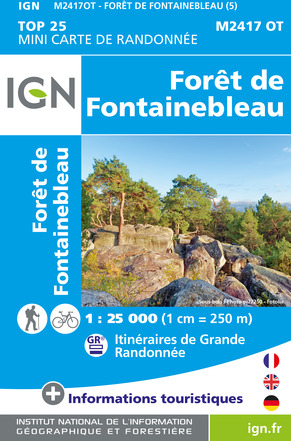
M2417OT - FORÊT DE FONTAINEBLEAU
Editore : IGN
Collezione : MINI TOP 25
Scala : 1:25 000
8.80€
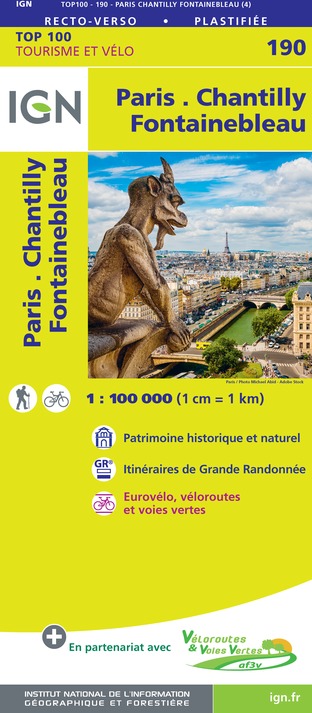
190 PARIS CHANTILLY FONTAINEBLEAU
Editore : IGN
Collezione : TOP 100
Scala : 1:100 000
8.40€
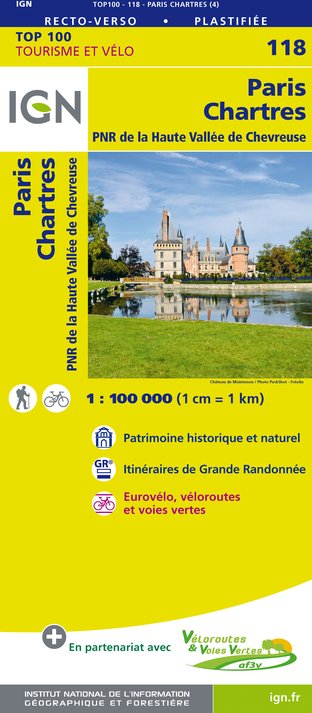
118 PARIS CHARTRES PNR DE LA HAUTE VALLÉE DE CHEVREUSE
Editore : IGN
Collezione : TOP 100
Scala : 1:100 000
8.40€

119 PARIS SENS PNR DU GÂTINAIS FRANÇAIS
Editore : IGN
Collezione : TOP 100
Scala : 1:100 000
8.40€

D77 SEINE-ET-MARNE
Editore : IGN
Collezione : CARTES DÉPARTEMENTALES IGN
Scala : 1:150 000
5.90€

D75-95 ÎLE-DE-FRANCE OUEST
Editore : IGN
Collezione : CARTES DÉPARTEMENTALES IGN
Scala : 1:150 000
5.90€
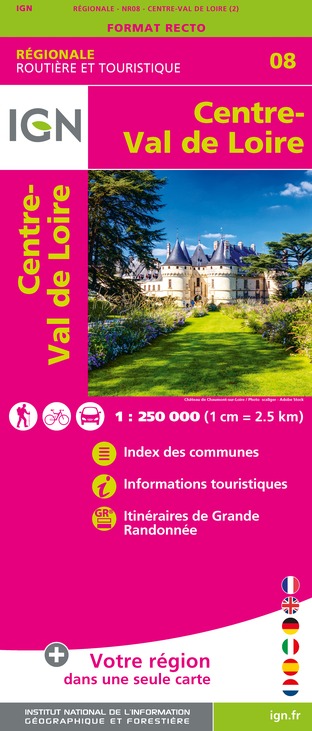
NR08 CENTRE-VAL DE LOIRE
Editore : IGN
Collezione : CARTES RÉGIONALES IGN
Scala : 1:250 000
6.80€

NR03 ÍLE DE FRANCE
Editore : IGN
Collezione : CARTES RÉGIONALES IGN
Scala : 1:250 000
6.80€

NR04 - GRAND EST RECTO/VERSO ARDENNE CHAMPAGNE
Editore : IGN
Collezione : CARTES RÉGIONALES IGN
Scala : 1:250 000
6.80€
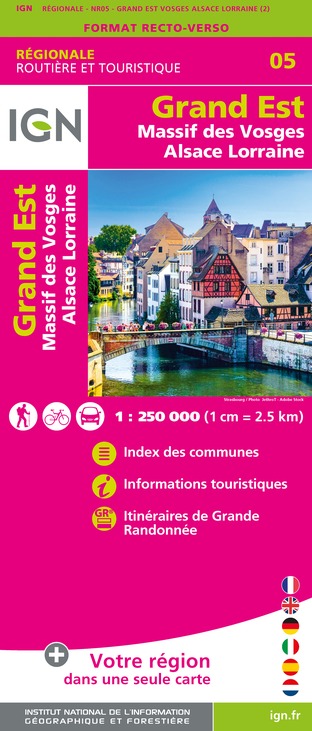
NR05 GRAND EST RECTO/VERSO MASSIF DES VOSGES ALSACE LORRAINE
Editore : IGN
Collezione : CARTES RÉGIONALES IGN
Scala : 1:250 000
6.80€
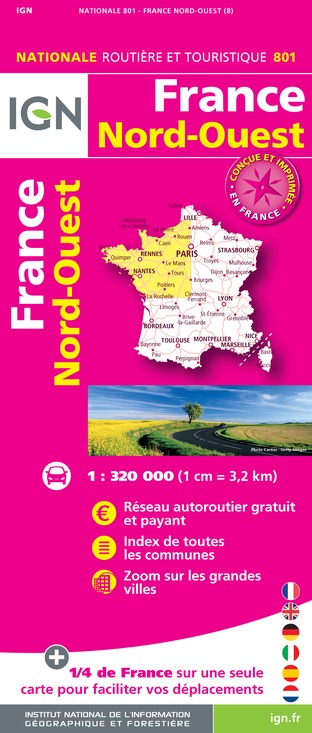
801 FRANCE NORD OUEST
Editore : IGN
Collezione : CARTES NATIONALES IGN
Scala : 1:320 000
6.10€

EUROPE
Editore : IGN
Collezione : DÉCOUVERTE DES PAYS DU MONDE IGN
Scala : 1:2 500 000
7.00€
Informazioni tecniche
In bici da corsa
Difficoltà
Non specificata
Dist.
56 km
Tipo di pratica
In bici da corsa
Mostra di più
Profilo altimetrico
Punto di partenza
77590
Bois-le-Roi
Lat : 48.474568Lng : 2.692292
Tappe
Punti di interesse
Autore dei dati

proposto da
Seine et Marne Attractivité
Quartier Henri IV - Place d'Armes 77300 Fontainebleau France
Valutazioni e recensioni
Da vedere nei dintorni






